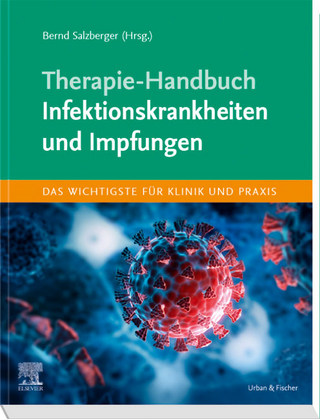
Polycystic Kidney Disease
CRC Press (Verlag)
978-1-032-17658-1 (ISBN)
This volume focuses on the investigatory methods applied to autosomal dominant polycystic kidney disease (ADPKD), one of the most common human genetic diseases. ADPKD is caused by mutations in PKD1 and TRPP2, two integral membrane proteins that function as receptor/ion channels in primary cilia of tubular epithelial cells. Thus, ADPKD belongs to ciliopathies, a group of disorders caused by abnormal cilia formation or function. This proposed book will cover the state-of-the-art methods ranging from molecular biology, biochemistry, electrophysiology, to tools in model animal studies.
Key Features
Explores the role of cilia in polycystic kidney disease
Focuses on myriad state-of-the-art methods and techniques
Reviews specific mutations integral to this autosomal genetic disease
Includes discussions of model systems
Jinghua Hu is an Associate Professor in Biochemistry and Molecular Biology at the Mayo Clinic in Rochester, Minnesota. He uses various model systems to study the correlation between cilia dysfunction and cilia-related diseases (collectively known as ciliopathies). The long-term goals of Dr. Hu's laboratory are to understand how cilia form and function; determine the pathogenesis underlying ciliopathies; and design therapies to prevent, delay or halt disease progression. The major experimental approaches used in Dr. Hu's laboratory include molecular genetics, biochemistry, real-time imaging and model organisms. Dr. Hu's research has been funded by the National Institutes of Health and PKD Foundation, among other organizations. Yong Yu is an Associate Professor and Graduate Director for Biological Sciences, Molecular and Cellular Physiology and Neurobiology at St John’s University. The research in Yu lab is focusing on the molecular mechanisms of assembly, function and regulation of ion channels and membrane receptors. Currently they are interested in the transient receptor potential (TRP) channels, proteins which are essential for sensory physiology and have been shown to play crucial roles in human diseases. So far, TRP channels has been shown to be involved in the formation of sight, hearing, touch, smell, taste, temperature, and pain sensation. They use cultured mammalian cells, Xenopus oocytes and zebrafish as model systems, and study structure and function of ion channels and receptors with a combined molecular biology, biochemistry, biophysics, x-ray crystallography, and electrophysiology approach. Research in Yu lab is funded by the National Institutes of Health.
1. Biochemical Analysis of the Polycystin-1 Complexity Generated by Proteolytic Cleavage at the G Protein-Coupled Receptor Proteolysis Site. 2. Structural Determination of the Polycystin-2 Channel by Electron Cryo-Microscopy. 3. Recording Ion Channels in Cilia Membranes. 4. Electrophysiological Recording of a Gain-of-Function Polycystin-2 Channel with a Two-Electrode Voltage Clamp. 5. Functional Studies of PKD2 and PKD2L1 through Opening the Hydrophobic Activation Gate. 6. Analyzing the GPCR Function of Polycystin-1. 7. Methods to Study the Vasculature in ADPKD. 8. Energy Metabolism, Metabolic Sensors, and Nutritional Interventions in Polycystic Kidney Disease. 9. “Kidney in a Dish” Organoids for PKD. 10. Rodent Autosomal Dominant Polycystic Kidney Disease Models. 11. Using C. elegans as a Model in PKD. 12. Approaches to Studying Polycystic Kidney Disease in Zebrafish. 13. Investigation of DNA Methylation in Autosomal Dominant Polycystic Kidney Disease. 14. Molecular Diagnosis of Autosomal Dominant Polycystic Kidney Disease.
| Erscheinungsdatum | 01.10.2021 |
|---|---|
| Reihe/Serie | Methods in Signal Transduction Series |
| Zusatzinfo | 20 Illustrations, color; 30 Illustrations, black and white |
| Verlagsort | London |
| Sprache | englisch |
| Maße | 156 x 234 mm |
| Gewicht | 560 g |
| Themenwelt | Medizinische Fachgebiete ► Innere Medizin ► Endokrinologie |
| Medizinische Fachgebiete ► Innere Medizin ► Nephrologie | |
| Studium ► 2. Studienabschnitt (Klinik) ► Pathologie | |
| ISBN-10 | 1-032-17658-X / 103217658X |
| ISBN-13 | 978-1-032-17658-1 / 9781032176581 |
| Zustand | Neuware |
| Informationen gemäß Produktsicherheitsverordnung (GPSR) | |
| Haben Sie eine Frage zum Produkt? |
aus dem Bereich


